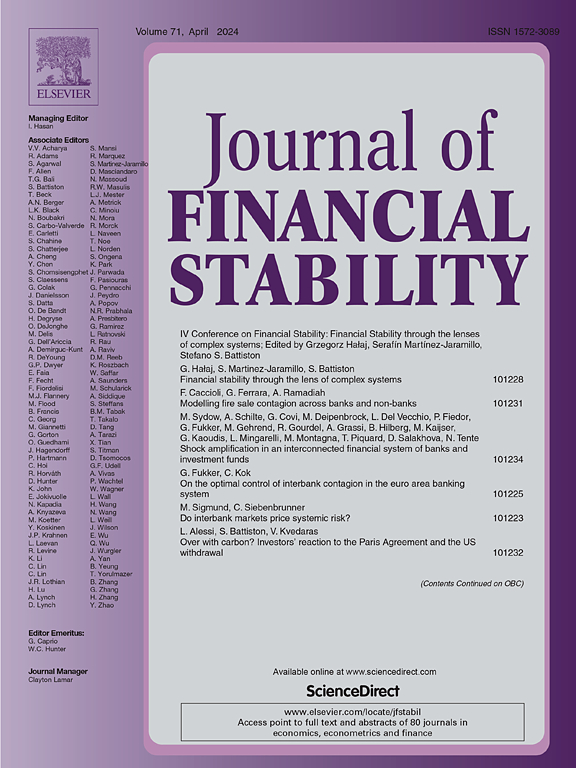出售倒闭银行:分行网络和收购方财务实力的重要性
IF 4.2
2区 经济学
Q1 BUSINESS, FINANCE
引用次数: 0
摘要
本文研究了根据美国联邦存款保险公司(FDIC)的购买和承担解决方法出售的美国破产银行的定价问题。我们考虑了 2009 年至 2016 年间 444 起美国破产银行收购案的季度数据。我们发现,收购方不仅为核心存款规模较大的破产银行支付了更高的价格,这一点已为文献所强调(也与联邦存款保险公司的观点一致),而且还为那些分支网络规模较大、地理位置不太分散的银行支付了更高的价格。当收购者(单独)竞购破产银行的资产时,他们对破产银行的分支机构数量给予了积极的评价,但似乎对地域分散性并不敏感。收购者也会为拥有国家特许经营权的银行支付更高的价格。研究结果还表明,破产银行最有可能被规模相对较大、资本雄厚的银行收购,这些银行在被收购后几年内的内生增长不会受到影响。总之,我们的研究结果有助于更好地理解购买和承担的解决方法对联邦存款保险公司和银行业的影响。本文章由计算机程序翻译,如有差异,请以英文原文为准。
The sale of failed banks: The importance of their branch networks and of the acquirers’ financial strength
This paper investigates the pricing of insolvent banks in the U.S. that are sold under the purchase and assumption resolution method of the Federal Deposit Insurance Corporation (FDIC). We consider quarterly data for 444 acquisitions of insolvent U.S. banks between 2009 and 2016. We find that acquirers not only pay higher prices for insolvent banks with larger core deposits, as has been highlighted by the literature (and is consistent with the FDIC’s beliefs), but also for those banks with larger branch networks that are less dispersed geographically. When the acquirers bid (separately) for the assets of the insolvent banks, they place a positive value on the number of branches of the insolvent bank, but appear to be insensitive to geographic dispersion. Acquirers also pay more for banks with a national charter. The results additionally show that failed banks are most likely to be acquired by relatively large and highly capitalized banks whose organic growth is not affected in the years following the acquisition. Overall, our findings contribute to a better understanding of the implications of the purchase and assumption resolution method for the FDIC and for the banking industry.
求助全文
通过发布文献求助,成功后即可免费获取论文全文。
去求助
来源期刊

Journal of Financial Stability
Multiple-
CiteScore
7.70
自引率
9.30%
发文量
78
审稿时长
34 days
期刊介绍:
The Journal of Financial Stability provides an international forum for rigorous theoretical and empirical macro and micro economic and financial analysis of the causes, management, resolution and preventions of financial crises, including banking, securities market, payments and currency crises. The primary focus is on applied research that would be useful in affecting public policy with respect to financial stability. Thus, the Journal seeks to promote interaction among researchers, policy-makers and practitioners to identify potential risks to financial stability and develop means for preventing, mitigating or managing these risks both within and across countries.
 求助内容:
求助内容: 应助结果提醒方式:
应助结果提醒方式:


